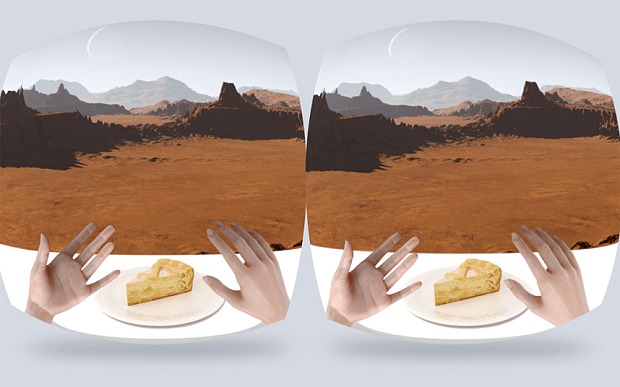
Summary
- Virtual food, soon to be reality
- Thermal technology to simulate the sweet taste
- Simulated chewing sensation thanks to the electrodes
- Medical technologies that can be used for virtual reality
Imagine for a moment. You face a fabulous banquet in a virtual reality game. The food looks so mouth-watering that you almost make your mouth water. Usually you might not taste these succulent-looking dishes standing in front of your eyes, but things have changed. You grab a shiny skinned chicken thigh, and begin to lick it. Its taste is delicious. You allow yourself a fang in its tender flesh and begin to chew. You can feel the tender texture of the meat between your teeth.
Virtual food, soon to be reality

This dreamlike scene will soon be reality. The virtual food tasting relies on electronic technology to feel the taste and texture even if your mouth is empty. This innovation could make it possible to increase the feeling of immersion in VR, but also allow people suffering from allergies or under a special diet to experience more flavors. After the sensation of touching, taste may well be the next sense stimulated by virtual reality.
Several projects have already succeeded in creating the illusion of taste. For example, Nimesha Ranasinghe of the National University of Singapore has created a digital lollipop capable of emulating different tastes, but also a spoon equipped with electrodes to amplify the salty or bitter taste of the food that is placed there.. The sweet taste simulation is currently not working as well. However, digitizing this particular taste could be very useful, especially in helping people stop eating too much sweet.
Thermal technology to simulate the sweet taste

As part of the ACM User Interface Software and Technology Symposium (UIST) in Tokyo, Ranasinghe and her colleague Ellen Yi-Luen Do presented a new project based on thermal simulation. This new technology uses changes in temperature to mimic the feeling of sugar on the tongue. The user places his tongue on a square of thermoelectric elements which are quickly heated or reproduced, then fooling the heat-sensitive neurons that contribute to the sensory code of taste.
The initial trial of this technology worked on half of the participants. Some also reported a spicy sensation when the device reaches 35 ° C, and a taste of mint when the temperature drops to 18 ° C. Ransinghe and Do plan to integrate this system into a glass or mug to help make sugar-free drinks taste sweet.Simulated chewing sensation thanks to the electrodes
- taste receptors may respond to electrical manipulation, but food is not all about taste. Texture is also important. This week, a team from the University of Tokyo demonstrated a device that uses electricity to simulate the sensation of chewing different types of food.The Electric Food Texture System, created by Arinobu Niijima and Takefumi Ogawa, relies on electrodes. However, these electrodes are not placed on the tongue but on the masseter muscle, a muscle in the jaw for chewing. The electrodes are used to give a feeling of hardness or softness while the user is chewing. Even without anything in the mouth, the user has the impression of chewing virtual food thanks to the haptic feedback provided by the electrical stimulation of the muscle.To give the food a harder texture, the muscle is stimulated at a higher frequency, while a longer pulse simulates an elastic texture. According to Niijima, the system is particularly effective at mimicking the texture of chewing gum.
This technology could also be used to modify the texture of real food. ISU participants wore electrodes while eating cookies. Ranasinghe, who tried the device, explains that the texture of the cookie has been changed to something harder and more elastic, like a gelatin bear.
Medical technologies that can be used for virtual reality

These two projects are still in the experimental stage, but share the goal of helping people on a special diet. Of many people cannot enjoy the satisfaction of tasting food, because their jaws are too weak, or because they have allergies. Niijima and Ranshinghe want to help them to make them happier on a daily basis.
Afterwards, the team wants to develop the idea by targeting other jaw muscles to create more complex textures and combine electrical stimulation with other sensory effects, such as the sound of chewing.
Similarly, Singapore hospital plans to conduct long-term study with electrode-enhanced spoons to try to reduce sodium intakes for elderly patients, Ransinghe says. Many older people lose their sense of taste and prefer strong tastes, but adding too much salt contributes to health problems like too high blood pressure. The spoon is used to electronically season food.
Gathered, all these technologies could one day be incorporated into a virtual reality headset to create a multi-sensory experience. It will probably soon be possible to enjoy virtual food. We will then get even closer to a perfect simulation of the real world. The theory of the simulator, notably put forward by Elon Musk, is therefore more and more credible.


























